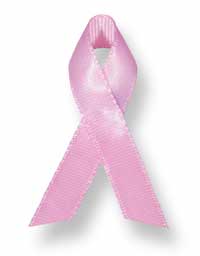Examining Links Between Violence and Substance Abuse
Raising Awareness in the Korean Community
Surviving Menopause with Soy

Joan Clark was on hormone replacement therapy (HRT) for 10 years, but after hearing about the dangers of long-term HRT use, she immediately stopped taking the drugs. She wasn’t prepared for what came next.
“Women now are advised to taper off the drugs, but I just stopped cold,” she explains. That was in August of 2001. “The symptoms of menopause came back — full force — in just two weeks.”
When a co-worker told Clark about a Johns Hopkins School of Nursing trial testing the potential of soy to lower cholesterol levels and alleviate menopausal symptoms in postmenopausal women, her interest was piqued. Clark’s main concern was easing her hot flashes and mood swings, but when enrolled in the trial, she was alerted to a serious health concern.
“My cholesterol had crept up to 260! I see an internist every year, and I had no idea it was that high,” says Clark, a Hopkins employee since 1965. Clark qualified for the NIH-funded study — the Beneficial Effects of Soy Trial (BEST) — led by Jerilyn Allen, ScD, RN, professor and associate dean for research at the School of Nursing. The study looks at postmenopausal women with slightly elevated levels of cholesterol. Though such levels would not necessarily require medication, they might increase lifetime risk for cardiovascular disease. Researchers aim to enroll a total of 180 women in the study.
“Cardiovascular disease remains the leading cause of mortality and disability in postmenopausal women,” Allen says. “Lack of estrogen from menopause can cause increases in bad cholesterol and decreases in good cholesterol, which can lead to narrowing of the arteries and increased risk for heart attack.”

Previous clinical trials have shown that soy protein containing isoflavones (a plant hormone that resembles a weak version of human estrogen) can offset high cholesterol. According to Allen, what sets this study apart from others is that recruitment targets equal numbers of African American women and white women.
“There is very little research [involving] African American postmenopausal women. Many of these women prefer natural remedies as opposed to medication,” explains Allen. “This is a group that is eager for alternatives to hormone replacement therapy.”
As an initial step, each woman in the study is given a health assessment. Then BEST provides an hour’s worth of nutrition and diet counseling so that the participants can make healthier choices. The women then begin the four month program, taking a daily shake-like drink, which may or may not contain a soy protein. The women are randomly assigned to one of the two groups, and the study is double-blind, so neither participants nor researchers know which women are receiving the soy supplement and which are taking the placebo. At the beginning, in the middle, and at the end of the four months, each woman’s cholesterol levels are measured and each completes a questionnaire about her symptoms of menopause.
Unlike Joan Clark, BEST participants Brenda Joyce Johnson and Jean Headen weren’t too concerned about easing the symptoms of menopause. They were primarily interested in soy’s positive effects on cholesterol. Both women learned about the study from a flier posted at their jobs.
Johnson says she began trying to improve her health last year and decided to participate in the study because she knew that consuming soy, along with eating more fruits and vegetables, exercising, and avoiding salt, was good for her health.
With a total cholesterol level at 280 mg/DL, Headen’s doctor considered putting her on medication, but Headen resisted. “The hardest thing for me to accept about getting older is taking medication,” she says.
So Headen started watching what she ate and exercising more, and she participated in the BEST pilot study, in which 17 women were all given a daily soy supplement. Her cholesterol dropped to 160 and she enrolled in the larger study.
Participants in the study are given the opportunity to receive a free three-month supply of soy supplement once they complete the trial, and program coordinator Carol Curtis says most women take advantage of this offer.
But Headen chose not to. “I was able to drink the supplement every morning while I was in the study, but after a while, it just got boring,” she says.
Allen says that boredom with the regime and non-compliance points to an important “next step.” “A logical extension of the study, if effective, is how to incorporate soy into everyday foods,” she explains. “This will present a problem with some women, particularly low-income women, because soy products, like tofu, may not be readily accessible in low-income areas.”
Most women are glad to have participated in the trial, says Curtis: “The women tell me they like being part of a study that may lead to ways to help our daughters and granddaughters survive menopause without taking hormones.”
Recruitment for the study continues and final results will be available next year.
—MT
When the Battered Are Men
In spite of common belief, victims of domestic violence are not always women. Michael Relf, PhD, RN, ’01, a professor at the Georgetown University School of Nursing, authored a study on the prevalence of battering victimization among gay men, published in last December’s issue of the American Journal of Public Health. His research found that gay men living in big cities are as likely to be battered as heterosexual women and that two in five urban gay men were abused by a partner sometime in the last five years.
Examining Links Between Violence and Substance Abuse
Are domestic violence and substance abuse related? Assistant Professor Benita Walton-Moss, DNSc, RN, ’78, intends to find out. She is principal investigator of a study that was recently awarded grant support from the National Institute on Drug Abuse. The research focuses on abused women who are also substance abusers. Walton-Moss examines the relationship between intimate partner violence and the physical and mental health of women entering substance abuse treatment.
Walton-Moss will also adapt and implement a cognitive behavioral therapy specifically for abused women in drug treatment and obtain initial results of the therapy’s effectiveness in reducing substance use, improving health outcomes, increasing safety behaviors, and preventing further violence.
Raising Awareness in the Korean Community

Community-based research is the focus of a project led by instructor HaeRa Han, PhD, RN, aimed at raising awareness about breast cancer among Korean American women. Han received a grant from the Johns Hopkins University Urban Health Institute for her study called “Building Community for Better Breast Health for Korean American Women.” It uses a church-based breast cancer screening program to increase awareness of breast cancer and promote breast cancer screening behavior.
—KP